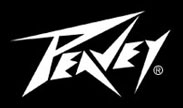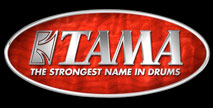



I am the drummer and I am a little worried because I have never worked to a click track before or I have tried one in the past and it didn’t work out, do you have any tips? |
| The main thing to remember about click tracks is, when they are done properly, they are extremely easy to work with and can really help you to relax and groove. You don’t have to worry about setting the tempo or rushing or dragging, you can just concentrate on rocking out and getting down the best performance possible. A lot of the people that have had bad experiences with them generally have had that experience recording a demo or similar in a badly setup home/small studio or they have been stuck with a clueless engineer (this can sometimes happen in any type of studio…) The most important thing by far is mental approach! If you see the click as some horrible machine in your headphones that runs simultaneously while you are playing, and every time you hear it go out of sync with your playing you alter your speed - You are going to have a very hard time indeed… You have to see the click as just another musician in your band You can play along with a bassist can’t you? How about a guitarist? How about if your bassist or guitarist was playing a cowbell… stood there in front of you, rocking out with a cowbell?* That’s all there is to it… That’s the big secret that everyone’s so cagey about. If you imagine the click as a member of your band playing a cowbell, instead of some nasty machine, it becomes very easy to rock out to & play with feeling or anything else you can do when playing with a musician from your band. The difference is, the cowbell player never screws up or drops his pick/stick or goes out of time… Some interesting click track facts 1. Just about every major album recorded in the last five years was recorded with a click… for a reason. 2. Even crazy stuff with lots of odd time changes & tempo changes is recorded with a click, even ‘The Dillinger Escape Plan’ record with a click… 3. The click does not kill feeling or groove! 4. You save money by using a click, because the editing takes much, much less time because your performance is much more accurate to start with 5. A lot of record companies will not release stuff that hasn’t been recorded to a click. 6. Using a click track will give you larger fuller breasts if you are a woman or a larger more impressive manhood if you are male. One of the above six facts is a lie, can you guess which one… The simple fact of the matter is this, if you have ever tapped along with the photocopier, the indicators in your car or the ring tone on the phone or practised on a pad with a metronome. You are going to zone into the click within about 3 minutes. If not, it might take 15 or so… ether way, with the right mental approach it’s not a big deal… * There are some very serious dedicated solo cowbell players out there you know… they probably have there own forum on the T’interweb & everything… |
Setting Guitar Intonation |
| This is a short guide to setting your guitar intonation. How to check your Intonation Connect a digital tuner to your jack, Carefully tune your instrument. Play each string naturally on the 12th fret & check it with the same string played open. The 12th fret is one octave higher than its open string and should be in tune with the open string... neither flat nor sharp. Adjusting your intonation If, after tuning the string to pitch it plays sharp at the 12th then the strings length will need to increase by moving its Bridge/Saddle further from the fingerboard. If the note is flat, the string must be shortened by moving the Bridge/Saddle closer to the fingerboard. Note is sharp - move the Bridge/Saddle away from the fingerboard Note is flat - move the Bridge/Saddle closer to the fingerboard Retune after each adjustment and recheck the intonation |
Setting Guitar Intonation (Correct Tuning) |
| Tune the two outside strings (or pairs) first, then tune towards the centre. This equalizes the pressure on the bridge and allows for rapid tuning. The note will always come up a little sharp on your tuner at first depending on how hard you pick, tune using the real note once it has stabilised. There is no point tuning to your first pick attack as the pressure is always changing with the dynamics of your playing. Always tune up; if the string is too sharp detune past the note & come back up to it. |
What are your rates? |
| My rates vary depending on the size & type of job and the amount of work entailed, please email me using the contact page on this site with specific details & I will be more than happy to give you a quote. |
When is payment due? |
| Full Payment for the whole session is due on the first morning of the session. (IN CASH! No cheques, postal orders, IOU notes from your granny etc…) |
| Home /-/ News /-/ Studio /-/ Gear /-/ Preparation /-/ Releases /-/ Contact /-/ F.A.Q. /-/ Links |
| Copyright 2004 - 2025 Nick Hemingway |
 |
 |
 |
 |